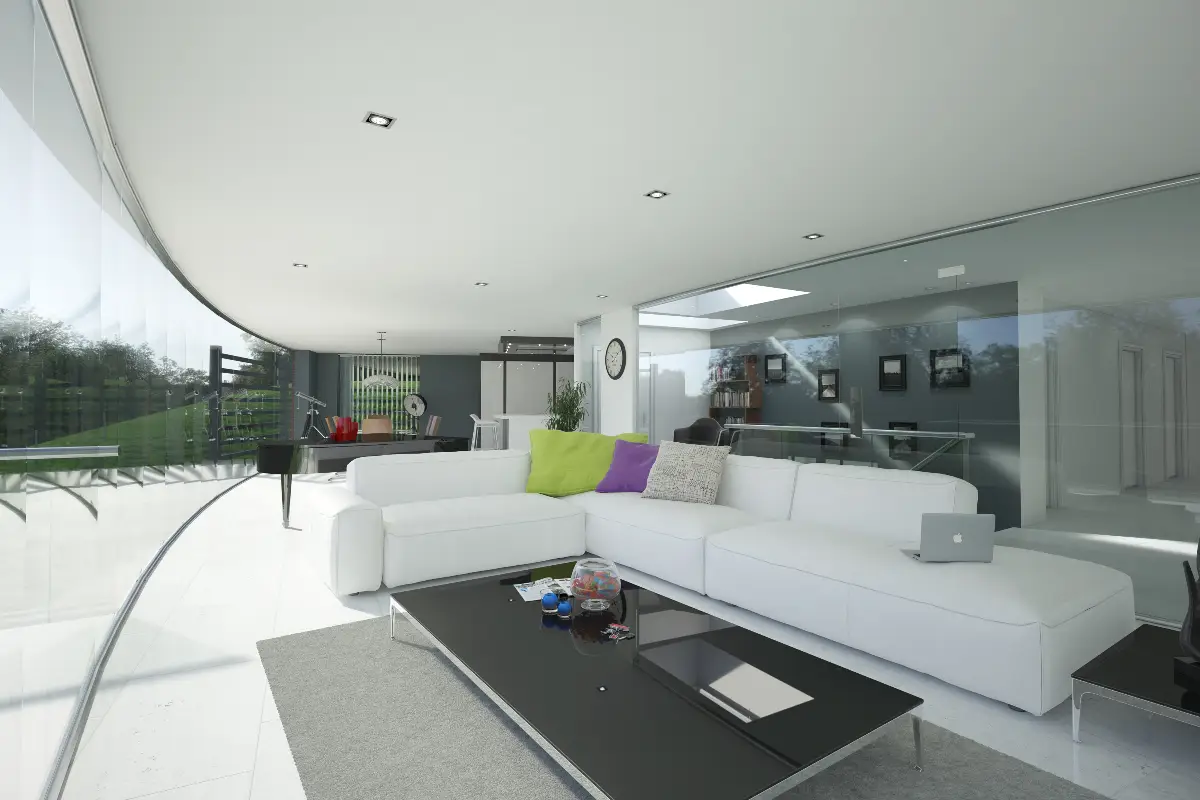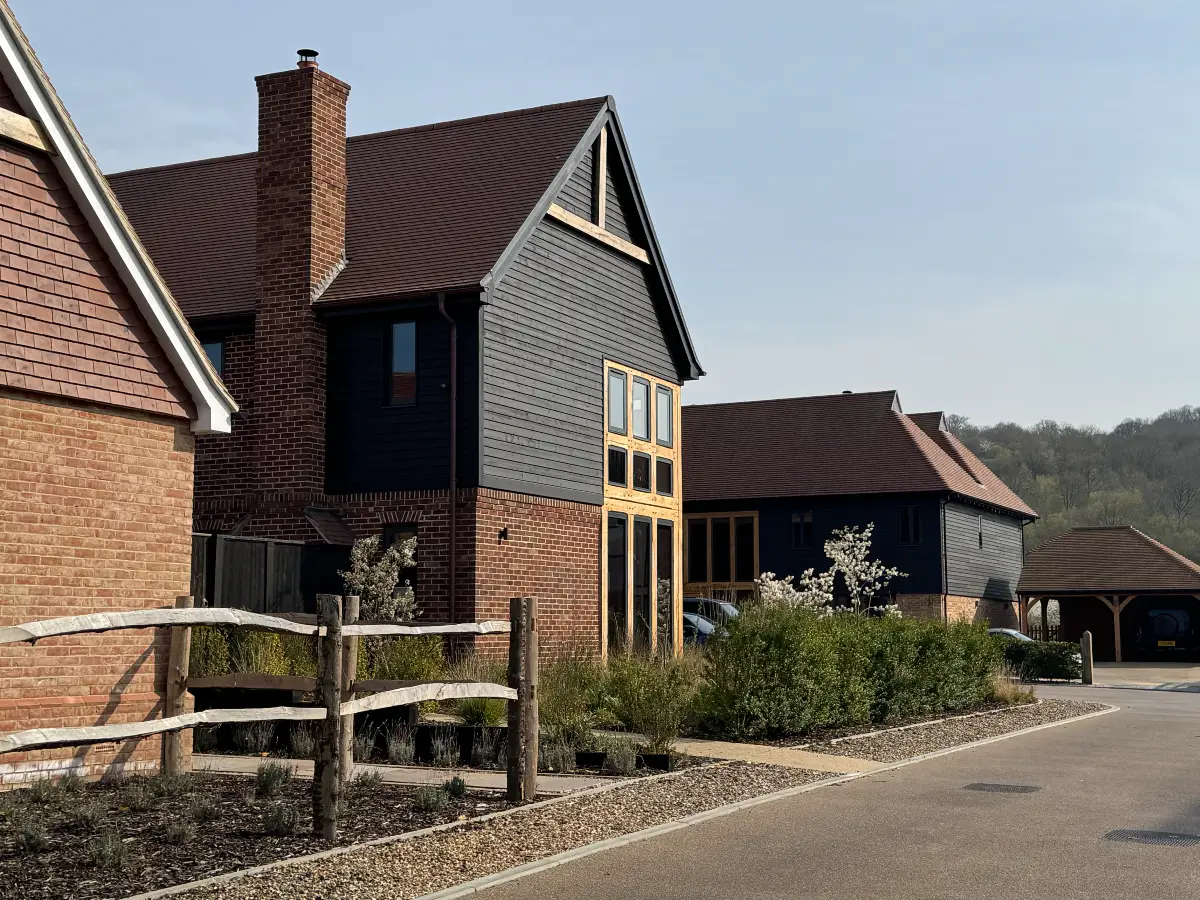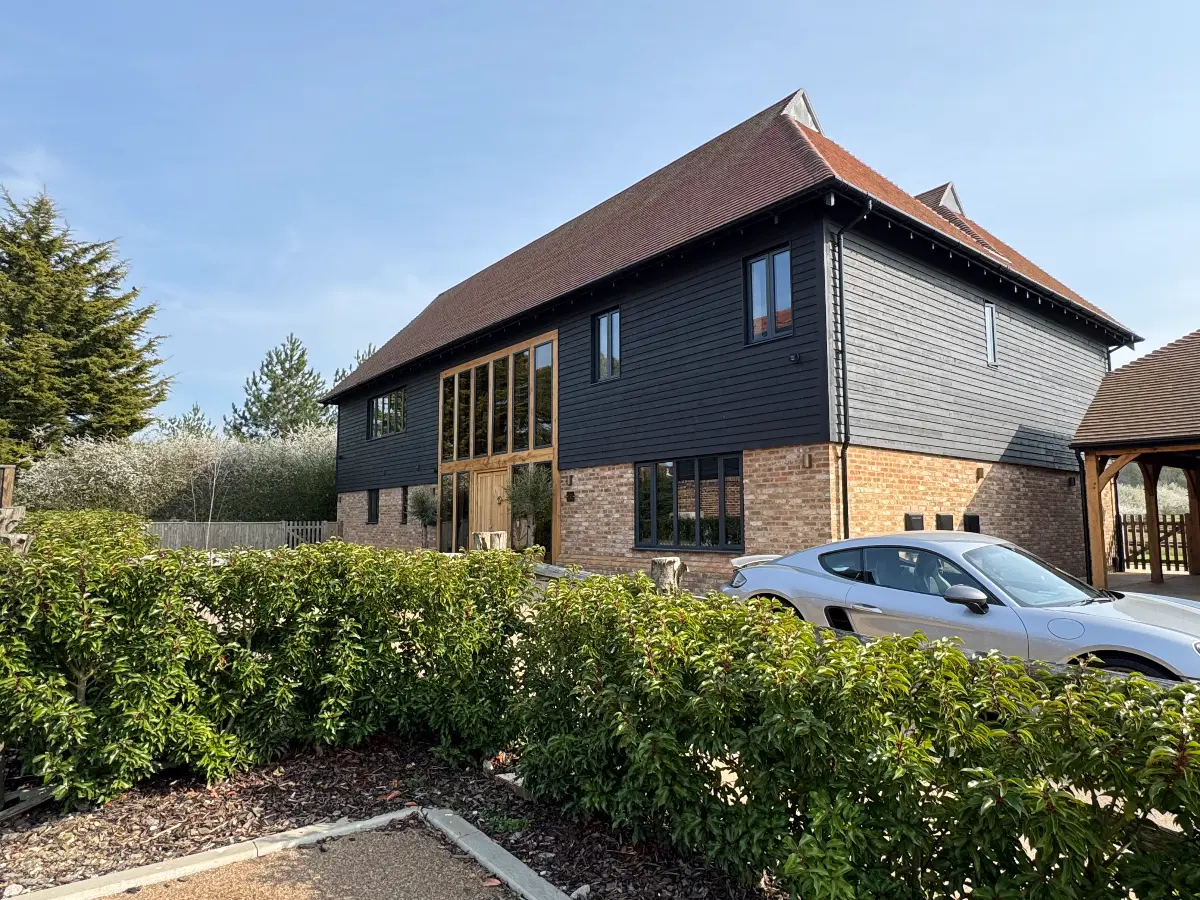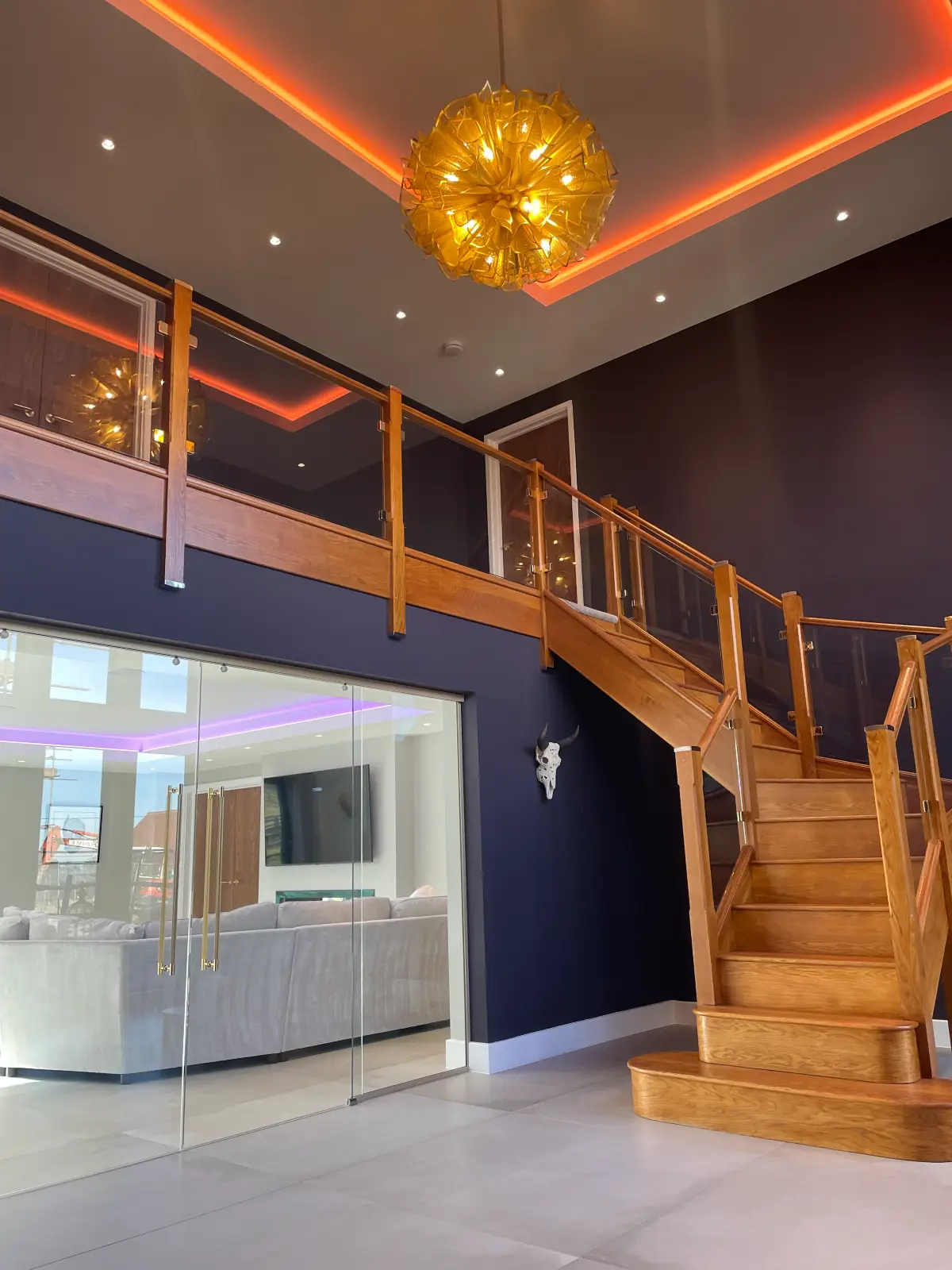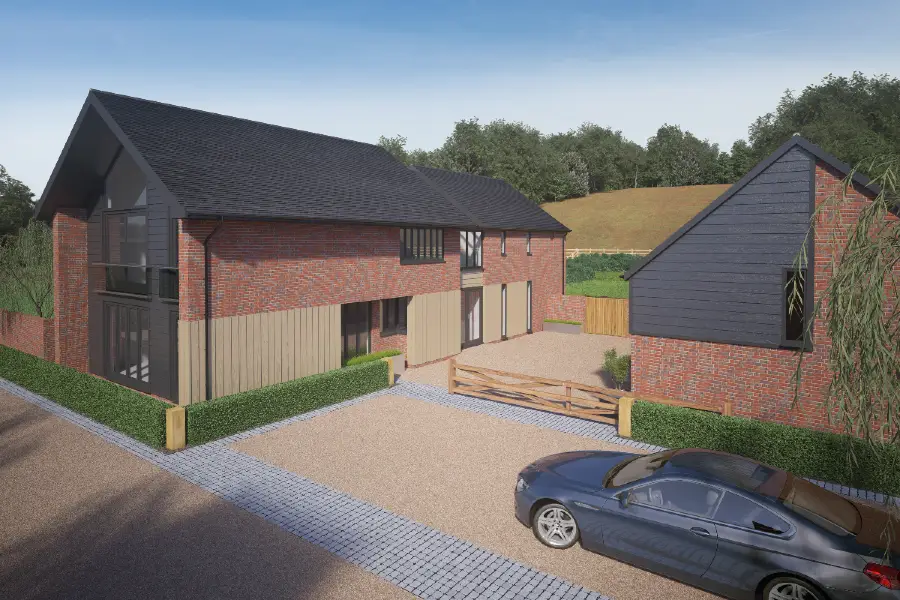A Bijou Community of Custom Build Homes in Rochester
Planning permission for self-build detached houses
Turning open land into a sought-after collection of high-end homes, we helped our client unlock the full potential of a prime site close to the city of Rochester.
Our client Classicus Estates, a privately owned property development, acquisition, and promotion company, wanted to secure planning permission for six self-build detached houses in Rochester.
To fulfil their brief, we obtained planning consent and established a detailed design code to guide the development of the self-build units. Following this, the individual plot buyers chose to appoint us to design their custom homes.
Completed in 2024, the high-end houses combine traditional barn-style forms, such as gabled rooflines, and natural materials with modern elements like open-plan interiors and large areas of glazing.
Bluegates Place, A Small Private Community Of Custom Build Homes In Rochester
Bluegates Place is located by Merryboys Farm House, in Cliffe Woods, a peaceful, semi-rural area within the Medway district, offering a countryside setting close to Rochester.
This was one of the first self-build projects we worked on at Taylor Roberts. The scheme was structured around six plots flanking a central serviced driveway. This outline provides a private, inward-facing community feeling.
Choosing Taylor Roberts To Design A Self-Build Scheme
We have worked with Classicus Estates for over fifteen years, supporting new development opportunities and preparing feasibility studies across a range of projects.
Given this long-term relationship and proven track record, they partnered with us for this dedicated self-build scheme, confident in our ability to guide the project from initial concept to successful delivery.
The Brief
The client’s brief was to secure planning permission for a self-build development on a narrow, deep infill site, while establishing a clear Design Code to guide individual plot
Our vision was to create six homes in traditional barn-style forms, complemented by modern elements and built with high-quality, natural materials to ensure lasting quality and a strong sense of character.
Key design priorities included maximising natural light through open-plan interiors and double-height windows, while maintaining privacy and fostering a sense of community across the site.
The Land Acquisition
An interesting aspect of this project was the creative land acquisition strategy. Rather than buying the site outright, the developer covered the planning application costs while the landowner provided the land, allowing the developer to secure a plot at a reduced cost and share profits from the other units.
The scheme's success also depended on the site’s location. Sitting west of the landowner’s house, it qualified as an “infill” plot within the settlement boundaries, which made planning approval much easier. This is a good reminder of how important it is to understand local planning definitions when looking at development opportunities.
The Design Code
The design code we set from the very beginning was a big part of the project's success. It covered everything - from materials to building zones - with a strong focus on quality and character.
Each plot had a defined area for building, along with clear rules for soft landscaping, car access, and minimum private garden space. We also controlled ridge heights and main room orientation to ensure everyone’s privacy was protected.
The materials palette was also tightly controlled: only real oak, natural slate or clay plain tiles, and timber or metal window frames were allowed.
Our close collaboration with the individual plot owners made the project even more unique. Although they came from different areas and didn’t know each other, each chose to work with us, despite being free to appoint any architect.
This allowed us to maintain control over the overall vision while tailoring each home to the owners’ needs, from the number of bedrooms and reception rooms to specific design preferences. We ensured that every self-build respected the original design code while feeling personal.
The Custom Build Homes Design
A key design feature we used in the individual self-build homes is structural oak ladder frames, glazed between metal or timber-framed windows. This maximises natural light in entrance spaces, creating an immediate sense of openness and offering filtered views through the home towards the garden, strengthening the connection between indoor and outdoor spaces.
While the window detailing adds a contemporary touch, the overall shape of the buildings stays true to traditional barn forms. Exposed features like collars and oak framing help to reinforce the agricultural character while adding architectural interest.
The rooflines mix gabled forms with cat slide extensions, giving the buildings a dynamic silhouette still rooted in tradition.
Smaller details, like gable pendants, flying gables using leadwork, and carefully crafted barge boards, bring extra texture and a real sense of craftsmanship to the façades.
By blending traditional forms with the right amount of contemporary design, the scheme creates a distinctive character that fits naturally into its setting.
The Materials
We picked a rich, authentic palette of materials to reflect the rural character of the development.
We chose a mix of multi-stock clay bricks and natural clay tiles for their texture and lasting quality, alongside new, unseasoned oak for key structural elements.
Our client also recommended that we use Cape Cod cladding as a tough, low-maintenance alternative to traditional painted boarding. It offers durability without the need for regular upkeep.
The Planning Application Approval Process
Due to the complexity of the scheme, approval took around three months.
After the plots were purchased, the individual owners engaged us to design their homes, and the subsequent planning applications for these progressed smoothly.
Construction progressed at different speeds. The first plots were completed quickly, while the final plot was finished in 2024.
The Client’s Feedback
The client continues to commission us today, showing their ongoing trust and satisfaction with our work. Feedback from the private self-builders was equally positive, with most coming back to us for further help.
But the project's real success can be seen in the community itself. Homeowners take pride in their homes and gardens, creating a small, beautifully kept neighbourhood that reflects both the quality of the design and the spirit of the development. It’s a testament to the pride and care the residents have invested in the community they helped to create.
Exploring a self-build opportunity? Taylor Roberts provides tailored architectural services to guide you from concept to completion.
Our expertise covers feasibility studies, CAD drawings, visualisations, residential developments, commercial schemes, and full design and build contracts. We work with clients in Canterbury and throughout the South-East.
Call us on 01227 457 545 or email us on enquiries@taylorroberts.co.uk to chat about your project.
Contact our team today for expert property advice - book now for free.
